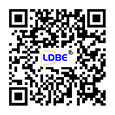Narrow Linewidth Lasers
Time:2023-11-15
Views:319
Some laser applications require the laser to have a very narrow linewidth, that is, a narrow spectrum. Narrow linewidth lasers refer to single-frequency lasers, that is, there is a resonant cavity mode in the laser value, and the phase noise is very low, so the spectral purity is very high. Typically such lasers have very low intensity noise.
The most important types of narrow linewidth lasers are as follows:
1. Semiconductor lasers, distributed feedback laser diodes (DFB lasers) and distributed Bragg reflection lasers (DBR lasers), are most commonly used in the 1500 or 1000nm region. Typical operating parameters are an output power of tens of milliwatts (sometimes greater than 100 milliwatts) and a linewidth of several MHz.
2. Narrower linewidths may be obtained with semiconductor lasers, for example by extending the resonator with a single-mode fiber containing a narrowband fiber Bragg grating, or by using an external cavity diode laser. Using this method, an ultra-narrow linewidth of several kHz or even less than 1kHz can be achieved.
3. Small distributed feedback fiber lasers (resonators made of special fiber Bragg gratings) can generate output powers of tens of milliwatts with linewidths in the kHz range.
4. Diode-pumped solid-state body lasers with non-planar ring resonators can also obtain a linewidth of several kHz, while the output power is relatively high, on the order of 1W. Although a typical wavelength is 1064nm, other wavelength regions such as 1300 or 1500nm are also possible.
The main factors affecting the narrow linewidth of lasers
In order to achieve a laser with a very narrow radiation bandwidth (linewidth), the following factors need to be considered in laser design:
First, single-frequency operation needs to be achieved. This is easily achieved by using a gain medium with a small gain bandwidth and a short laser cavity (resulting in a large free spectral range). The goal should be long-term stable single-frequency operation without mode hopping.
Second, the influence of external noise needs to be minimized. This requires a stable resonator setup (monochrome), or special protection against mechanical vibrations. Electrically pumped lasers need to use low-noise current or voltage sources, while optically pumped lasers need to have low intensity noise as the pump light source. In addition, all feedback light waves need to be avoided, for example by using Faraday isolators. In theory, external noise has less influence than internal noise, such as spontaneous emission in the gain medium. This is easy to achieve when the noise frequency is high, but when the noise frequency is low the effect on linewidth is most important.
Third, laser design needs to be optimized to minimize laser noise, especially phase noise. High intracavity power and long resonators are preferred, although stable single-frequency operation is more difficult to achieve in this case.
System optimization requires an understanding of the importance of the different noise sources, since different measurements are required depending on the dominant noise source. For example, the linewidth minimized according to the Schawlow-Townes equation does not necessarily minimize the actual linewidth if the actual linewidth is determined by mechanical noise.
Noise Characteristics and Performance Specifications.
Both the noise characteristics and performance metrics of narrow linewidth lasers are trivial issues. Different measurement techniques are discussed in the entry Linewidth, especially linewidths of a few kHz or less are demanding. In addition, only considering the linewidth value cannot give all noise characteristics; it is necessary to give a complete phase noise spectrum, as well as relative intensity noise information. The linewidth value needs to be combined with at least the measurement time, or other information that takes into account the long-term frequency drift.
Of course, different applications have different requirements, and what level of noise performance index needs to be considered in different actual situations.
Applications of Narrow Linewidth Lasers
1. A very important application is in the field of sensing, such as pressure or temperature fiber optic sensors, various interferometer sensing, using different absorption LIDAR to detect and track gas, and using Doppler LIDAR to measure wind speed. Some fiber optic sensors require a laser linewidth of several kHz, whereas in LIDAT measurements, a 100kHz linewidth is sufficient.
2. Optical frequency measurements require very narrow source linewidths, which require stabilization techniques to achieve.
3. Optical fiber communication systems have relatively loose requirements on line width, and are mainly used for transmitters or for detection or measurement.







